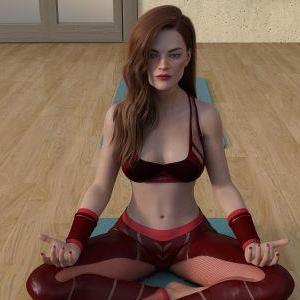The final stop on our IGN First journey through FromSoftware was the sound studio, where Lead Composer Shoi Miyazawa brings the haunting, evocative soundscapes of The Lands Between and Limveld to life. His music blends hope, melancholy, and tension into an immersive auditory experience. In this exclusive interview, Miyazawa shares insights into the creative process behind FromSoft’s iconic soundtracks, the directorial vision for Nightreign, and the personal influences that shape his compositions.
IGN: To start off, how did you get into composing music for video games? Are you a longtime gamer yourself?
Shoi Miyazawa – Lead Sound Designer on Elden Ring: Nightreign:
I’ve always been drawn to the Armored Core series, so when Hoshino-san reached out about joining FromSoftware, I was immediately interested. The music from those games had a big impact on me. Beyond that, titles from my childhood—like Ganbare Goemon, Secret of Mana, and the Castlevania series—have been major musical inspirations. I still revisit them for research and creative fuel.
Do you have any favorite composers—inside or outside of gaming—that have influenced your work?
I’ve always admired artists like King Crimson and Marilyn Manson. I’m drawn to music with contrasting energies and unconventional textures. Those differences inspire me to explore bold directions in my own compositions.
Shifting focus to Elden Ring and Nightreign, what’s your process when creating music for a new game? Do you work from concept art, narrative details, or mood descriptions from the director?
It varies. Sometimes the director gives a brief on the emotional tone of a location or boss. Other times, we’re inspired by concept art or even text-based descriptions—like a boss’s backstory or the setting of their arena. These elements help shape the musical direction, depending on what’s available at the time.
Has composing for Nightreign been different from working on the base Elden Ring game?
While Nightreign is a spin-off, we wanted to maintain a connection to the core identity of Elden Ring. I had many direct discussions with the director about how to balance familiarity with innovation. He wanted the soundtrack to feel distinct from the Souls series while still being memorable and accessible. That idea of “catchiness” was important—creating music that stands out while staying true to FromSoftware’s atmosphere.
Can you share some of the specific notes or themes the director gave you for Nightreign? Were there recurring emotional tones you aimed to capture?
Since night is a central theme, we focused on feelings of isolation, unease, and being out of place. The darkness itself became a character—something vast, mysterious, and slightly threatening. We wanted the music to reflect the loneliness and tension that come with nighttime, reinforcing the player’s sense of vulnerability as the world grows more dangerous.
Among your projects at FromSoftware, which has been your favorite, and which posed the greatest challenge?
It’s hard to choose, but a few pieces stand out. One is Consort Radahn from Elden Ring. I often compose in a dimly lit room, and while working on that track, I had a strong sense of someone watching me from the shadows—almost like Radahn himself was present. That eerie feeling bled into the composition.
Another meaningful piece is Takes Me Anywhere from the bonus soundtrack of Armored Core VI. Though it’s a departure from our fantasy titles, Armored Core holds a special place for me. When I joined FromSoftware, the series was on hold, so contributing to its return—even through a bonus track—felt like closing a personal loop. That piece carried ideas I’d held onto for years.
Elden Ring credits multiple composers. How collaborative is the process? Do you work independently, or do you share ideas and feedback?
Typically, one composer handles one track from start to finish. We do exchange ideas and give feedback within the sound team, but the credited composer is the one who sees the piece through. Nightreign, however, was different—there were instances where multiple composers collaborated on a single track, making it a more unified effort in certain areas.
We saw a demo of Libra: Creature of Night today. Can you share any insights into how that boss’s music was created?
Libra was unique. The character brief included specific musical direction—something rare. The design suggested exoticism, madness, and a demonic presence. We also wanted to reflect the duality of victory and defeat, risk and reward, both in the visuals and the music. For Libra, we pushed contrasts to the extreme, creating a soundscape that shifts dramatically to match the evolving battle.
The shift between day and night in boss fights is striking, especially in the music. How did you approach those transitions?
Nightreign features a three-day cycle, and the music evolves with it. As night falls, the danger intensifies. We wanted players to feel increasingly out of their depth, surrounded by growing tension. The soundtrack mirrors this progression—each night brings heavier, more oppressive tones, reinforcing the sense of looming threat.
Is there a particular track you’re especially excited for players to hear for the first time?
One of our goals was to emphasize the uniqueness of each boss encounter, especially since players will face them repeatedly. We pushed the boundaries of what FromSoftware’s fantasy music could be—experimenting with structure, instrumentation, and intensity. I hope players notice how far we’ve stretched the sound, creating something both familiar and boldly new.
On a personal note, do you have a favorite instrument or tool you like to use in your compositions?
It’s not an instrument, but my foundation is digital audio workstations and DTM (Desktop Music) software. I started making music on a personal computer, and that environment allows me to fine-tune every note and pitch with precision. As a creator, that level of control is essential. I dive deep—maybe too deep—into the details, and I hope that care comes through in the final pieces.
Finally, what’s your favorite game of all time?
One that left a lasting impression is Myst. I remember its pre-rendered scenes and the way they transitioned seamlessly, drawing me into a mysterious, puzzle-filled world. That sense of exploration and discovery really shaped my view of what games could be. For me, Myst remains a standout experience.






